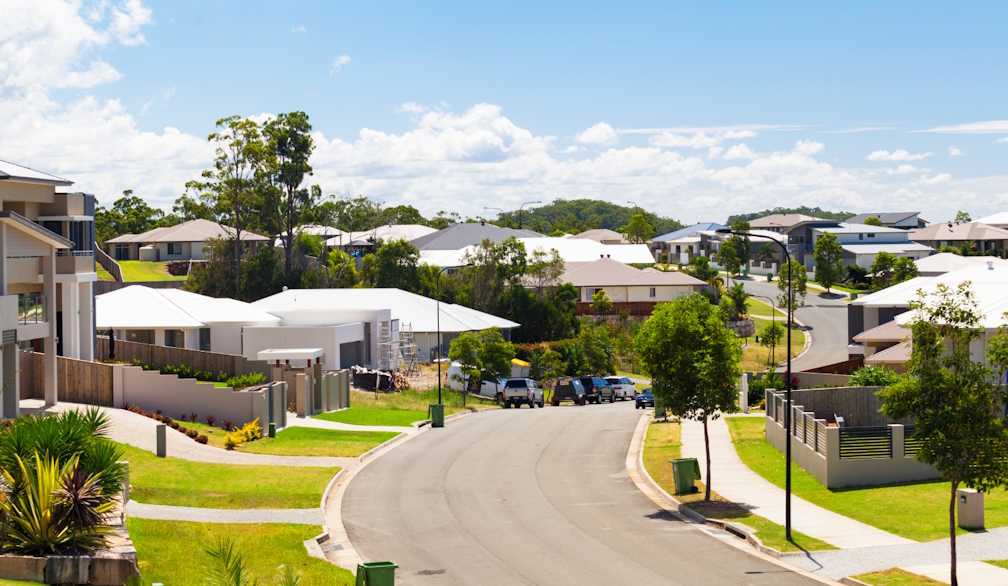Investing in Cheap Maintenance - Why Landlords Love a bit of Brick

Brick houses are much sought after in the real estate market, with many real estate agents subscribing to the belief that they really ‘sell themselves’. But why is this the industry norm? What makes brick houses such hot property? For insight into why brick houses make such good investments, we’ve done the research and weighed up the pros and cons. Get the low down from an experienced building inspector!
Are Brick Houses A Good Investment?
Brick houses or timber houses? Live in Timber, Invest in Brick – all the investor questions come up with one answer – brick houses make for the best investment properties. If you’re looking to make a solid life-long investment, brick houses are definitely the way to go! With their durability, sustainability, and ageless appeal, brick homes remain number one in the hearts and minds of real estate agents and property investors everywhere. Read on to find out why!
The pros of brick
Brick houses are the ultimate in real estate investments – they’re low maintenance, weather and fire resistant, secure, eco-friendly, and incredibly versatile. When it comes to the real estate market, brick is a great selling point. For years, brick has actually set the standard in the building industry, with quality materials resulting in quality properties. We’ve delved a little deeper and done an in-depth analysis into why it makes such good sense to invest in a property made of brick.
Low maintenance is always attractive
Brick is the building material of choice when it comes to low maintenance. It is an incredibly durable material that will maintain its attractiveness for upwards of 50 years and beyond. With brick, you won’t have to worry about discovering any rot or dents, or the cost associated with repairing those kinds of issues. You also don’t need to paint brick after its installation or chemically treat it to improve its appearance. What homeowner or landlord nowadays has the time to put into the extensive upkeep that other building materials might require? With a brick home, a good wash every now and then with a high-pressure hose is pretty much all you’ll need.
Weather and fire resistant
Brick is the material for withstanding the tests of time. Brick adds another layer of storm protection to a house due to its stellar performance in high winds and heavy moisture. Studies have shown that brick dwellings can actually withstand the impacts of flying debris at far greater wind speeds than timber, and they’re much better suited to controlling moisture.
In relation to fire, nothing outperforms old fashioned brick. The main ingredient in brick is clay which is fired at incredibly high temperatures. For this reason, brick is considered a non-combustible material. Surprisingly, brick can even help to contain fire to a particular room or portion of the house, which makes it a really safe alternative to timber or other materials.
Due to these extra safety features, a number of insurance companies offer lower rates for homeowners’ insurance for homes built with brick. That is a massive selling point for brick homes!
Naturally energy efficient
Brick is naturally energy efficient, so you’ll save on electricity and power bills. With brick, your home will stay cool in summer, and warm in winter. In this way, brick combines with passive building design to harness natural energy sources, which you’ll definitely feel in your hip pocket!
Creative, colourful, stylish
Nowadays, brick can come in a variety of colours and styles. From a beautiful chocolatey brown to vintage red, golden sand, shiny metallic or smooth pastel finishes, brick houses can make for a seriously impressive street presence. You can choose from traditional and classic designs for something enduring and elegant, or go for a sophisticated modern design that is sure to turn heads. You’re not as limited with brick as you might have been in previous decades.
A secure lifetime investment
Brick has been the building material of choice for decades for a few other simple reasons – it’s cost effective and incredibly easy to work with. In today’s modern world, it’s also important to consider the environmental impact that the building materials you choose might have. With brick, this isn’t a concern. Bricks are durable, reusable, free from contaminants, and naturally resistant to pests, like termites. The materials that brick is made from, shale and clay, are some of the most abundant materials on earth. What’s more, brick is renowned for its strength, the quality of its construction, and its ageless appeal. When you invest in a property made from brick, you’re investing not only in a building that will last; you’re investing in something that is going to maintain its appeal for decades to come.
The cons
There are a few notable negatives about brick houses that you should be aware of prior to purchase. Firstly, brick is more expensive than other building materials. On average, brick costs about 6 to 7% more than timber. Brickwork can also suffer from rising damp and subsequent wall fretting if the wall has not been constructed correctly. This can also contribute to deterioration of the mortar joints around the bricks. These joints may need to be repointed over time, where the mortar needs to be replaced to ensure the integrity of the brick structure.
It has to be said though that the pros of a brick building far outweigh the cons. With its popularity, strength, sustainability and economy, brick outperforms most other building types. Overall, brick remains a practical, economical material to choose when you’re looking to invest in a property.
Brick Needs Inspecting Too
Regardless of the kind of structure you’re interested in, it’s vital to protect your investment, your family and your future by ensuring you know what you’re dealing with. Booking a building inspection will protect your bricks and mortar investment.
